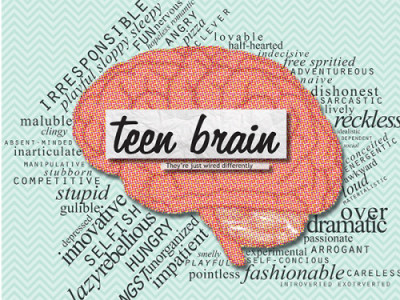UNLOCKING THE ADOLESCENT BRAIN
Research shows us how understanding adolescent brain growth can help to increase our understanding of corresponding adolescent behavior.
As a psychologist who specializes in the treatment of children and adolescents, I often meet with parents who are looking for insights into better understanding their teenage son or daughter. Some common adjectives I hear from parents in describing their teens will often include “moody,” “disorganized,” “careless,” and/or “impulsive,” just to name a few. Regardless of how accurate or inaccurate these descriptions may be, recent brain-imaging research suggests that a significantly contributing factor as to why teens behave the way they do is that a period of accelerated, dramatic brain growth is occurring over the course of this adolescent life stage.
WHAT THE RESEARCH TELLS US
Recent research involving brain-imaging samples indicates that a significant amount of brain activity and development occurs during the adolescent years. In fact, other than in our infant years, the brain undergoes its most dramatic restructuring process over that time period between pre-adolescence and young adulthood. In adolescence, after brains have expanded in terms of cell number and structure, pruning and myelination processes take over that result in the brain becoming better integrated to perform functions that are specific to an individual’s activities of daily living. Brain-imaging research also shows us that over the course of this adolescent period, growth occurs in the more primitive, sensory regions of the brain (our emotional response centers), and then continues outwards to the regions of the brain more responsible for performing structured, sophisticated functions (our thinking, strategizing centers). Now just because the higher regions of the adolescent brain have yet to reach their full potential, neuroscientists caution us not to think of the adolescent brain as “immature,” but rather the sequence of development that is occurring is very intentional and very appropriate to a time in our lives where new abilities develop and a passion for life, learning, exploring, and trying new things emerges. Some researchers would go so far as to suggest that not only do we reach the peak of our physical vitality during our adolescent years, but we also reach the peak of our mental vitality during that time.
TIPS TO CONSIDER FOR CONNECTING WITH YOUR TEEN
1) Focus on the feelings.
Teenagers are emotionally driven and emotionally in touch—even more so than we are as adults. Making process comments about our teen’s feeling states (ex. “I can see how your teacher really upset you in class today”) helps to convey that we understand and we value how our teen feels.
2) Encourage creative expression.
Adolescent brain expert Dr. Dan Siegel states, “Our creative exploration of adolescence is found as we push against the status quo, imagine how things could be, and not simply accept them for what they are…the reality is that most innovations in art, music, science, and technology emerge from the adolescent mind.” Provide your teen with opportunities to explore his or her creativity, whether it be through performing arts, athletics, drawing/painting, building and designing, or the like.
3) Help fill in the gaps.
Caring and consistent adults can serve as an external support for providing functional capacities that teens may struggle with, due in part to the significant brain restructuring process that occurs during adolescence. Model strategies that you as a parent use to keep yourself organized, give your teenagers the occasional benefit of the doubt when they say they forgot to do something, and use every instance of typical teenage irresponsibility as a teachable moment.
Dr. Balfanz is the Senior Clinical Psychologist at JJ-Premier Medical Care, a comprehensive mental and medical health service clinic for expat children, adolescents, adults, and families living in Shanghai. For more information on clinic services, contact Dr. Balfanz at: nbalfanzpsyd@jjpremier.com

